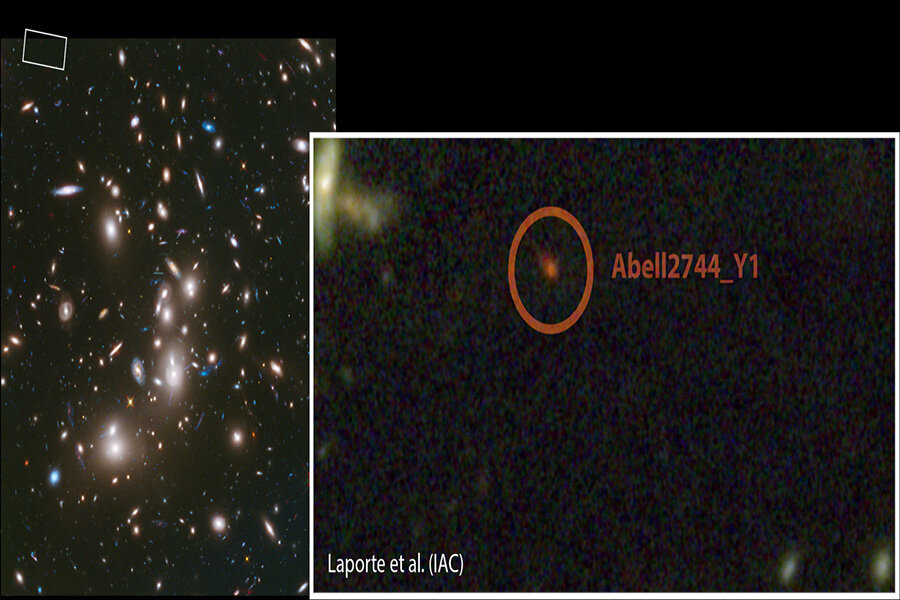Astronomers peek at ancient galaxy near the edge of the observable universe
Loading...
NASA's Spitzer and Hubble Space Telescopes might have just spotted one of the youngest galaxies in the universe.
Formed 650 million years after the Big Bang, Abell2744_Y1 is about 30 times smaller than our Milky Way, but it is producing at least 10 times more stars, according to a press release from Instituto de Astrofísica de Canarias (IAC), an astrophysical research institute in Spain.
Light from this galaxy has travelled roughly 13 billion years to reach us, making it one of the farthest known galaxies.
The findings of the study are to be published in the scientific journal Astronomy and Astrophysics Letters.
The international team of astronomers who carried out the study reported a redshift of 8 when they measured light emanating from the galaxy. The most distant galaxy has a redshift of more than 7. Scientists are still examining galaxies with redshifts as high as 11.The farther away a galaxy is, the higher the redshift.
"Just a handful of galaxies at these great distances are known," said Jason Surace, of NASA's Spitzer Science Center at the California Institute of Technology, Pasadena, in a press release from the Jet Propulsion Laboratory .
The discovery is part of the Frontier Fields program, where three high-precision telescopes – Hubble, Spitzer and Chandra – "peer through clusters of galaxies, where gravity magnifies the light of more distant galaxies."
The Hubble, Spitzer, and Chandra telescopes are capable of measuring infrared light, visible and shorter-wavelength infrared light, and X-rays respectively.
Abell2744_Y1 was found by scientists through a gravitational lens. Abell 2744, a cluster of galaxies in front of the newfound galaxy acted as the lens and helped to magnify the light coming from the more distant galaxies behind it.
Often used as a proof to further Einstein's general theory of relativity, which explains gravitation by describing how massive objects cause space and time to "curve," gravitational lensing results when a massive galaxy comes in between the source of light and the observer. As a result of this "deflector," light is distorted in a manner that the observer sees multiple images of the source of the light.
Nicolas Laporte, post-doctoral researcher at the IAC said, “we expected to find very distant galaxies close to the cluster core, where the light amplification is maximum. However, this galaxy is very close to the edge of the Hubble image where the light is not strongly amplified. We are really lucky that we could find it in the small field of view of Hubble."
"Abell2744_Y1 is a smaller galaxy, less massive but more distant and much more representative of the early Universe," said Ismael Pérez-Fournon, professor at the La Laguna University in Spain and head of the IAC group.








